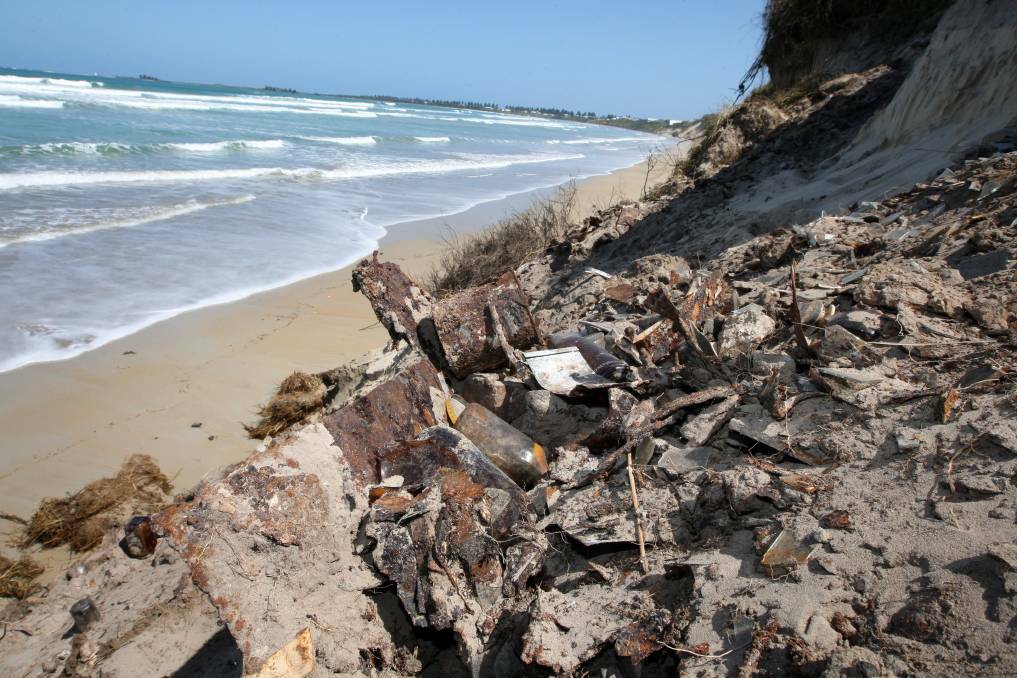
The Victorian government is asking for community input as it works out how to stop a large section of Port Fairy's East Beach turning into a potentially toxic tip.
Subscribe now for unlimited access.
$0/
(min cost $0)
or signup to continue reading
Two former landfill sites are buried beneath the dunes along the middle section of the beach, which also happens to be the section suffering the worst erosion, with storms and high tides exposing rubbish several times over the past decade.
The Department of Environment, Land, Water and Planning (DELWP) has been saddled with finding a long-term solution and has produced a range of options for locals to weigh in on before settling on the final plan.
The most low-impact interventions presented by DELWP are dune restoration, where matting and native vegetation are installed to naturally strengthen the dunes, and beach nourishment, where sand is pumped or trucked in to replace the areas that have been washed away.
These "nature based adaptations" involve minimal disruption to the beach and landscape, and would effectively protect the buried rubbish, but would require ongoing maintenance as sand is naturally washed away. Despite the ongoing maintenance they are perhaps the cheapest options in the short to medium term.
Another option, which may be done in conjunction with protective measures, is the removal of the rubbish from the landfill sites.
DELWP probed the buried tip sites in March 2022 to assess the extent of the hidden rubbish. They concluded there was 170,000 cubic metres of waste concealed beneath the dunes, including asbestos and other toxic material.
Separate analysis found the dunes would potentially recede dozens of metres by 2050, exposing a significant portion of the buried waste.
DELWP calculated partial removal of the waste would cost up to $51.2 million, while full removal would potentially cost $114.4 million. Removal works would also significantly disturb the existing dune ecosystem.
The department also offered several "major" intervention options, including a rock berm, a seawall, groynes, breakwaters, and artificial reefs.
The rock berm or seawall options would both protect the dunes immediately behind them, but the beach in front and on either side of the structure could wash away completely.
Groynes and breakwaters could prevent erosion at the problem areas along the beach, but both interventions would radically change the aesthetics of East Beach, as well as the natural movement and deposition of sand.
Artificial reefs would reduce erosion, but would be expensive to build and maintain, and would permanently alter the surf breaks along the beach.
The DELWP feedback survey is open until February 10, and the department will hold an all-day drop-in session at Port Fairy Lifesaving Club on December 14 from 10.30am to 1.30pm and 2.30pm to 6pm.
The department will make a final decision on a solution by April 2023.
IN OTHER NEWS


